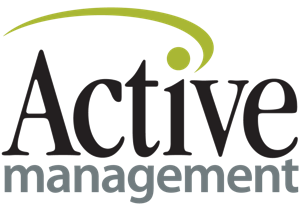Hiring a two way street Part 1: Instructors how to choose the right business
The fitness industry is currently experiencing one of the biggest instructor shortages in recent times. Applying for anything and everything is never a good option, but particularly when instructors currently have the ability to be a little more choosy with where they work. Instructors and businesses alike will benefit from this two-part article to understand what perks and pitfalls can make or break the hiring cycle.

Instructors often have the least job security, are paid the least in the industry, yet are expected to deliver excellence to a room full of people with every class they teach. It can be very high demand on instructors’ bodies, voices and immune systems. Knowing all this, it is up to the instructor to decide their weekly mental/physical limit on the amount of classes you teach. If you are required to be very active in all of the classes you are teaching it is very important that you consider not only your limit, but what you will do when (not if) you need time off.
Our first point when looking for a new facility to teach at is to ask what their policy is for requesting leave and finding cover/s. Be sure to know how much notice you need to provide for holidays and classes you can’t attend. How easy is it to find cover, and who takes care of that process? Are you still able to teach a class while you are injured/recovering? What is the policy surrounding instructor class participation and delivering an excellent class experience? Instructors often feel like they cannot ask these questions from a facility, but this is imperative information for anyone thinking about teaching classes ongoing.
Our next item to look out for is payment. What is the pay rate for the class you teach? It is important to investigate your payment per time; including the hours of preparation for each class, travel time and any administration (if any). This calculation is your adjusted hourly rate. Lots of preparation and travel time will affect your commitment to that class and needs to be taken into account. An adjusted pay rate is something all instructors should calculate for themselves to understand what their overall salary is and how much time is left over in their week. It is also important to ask the business how they review pay rates, how often, and if there is a progression scheme. If you are consistently packing out your classes yet there is no reward or compensation for your excellence it’s time to ask why?

As an instructor I have been reluctant to really dive into these aspects of teaching because I did it for the love of teaching. As I have grown into the industry I now know that just because I love it, doesn’t mean I should not be paid for my commitment and excellence. We need to get more comfortable having these discussions up front, checking contracts, or asking businesses to add these points into a signed contract.
Lastly you want to look at the perks the business is offering you. Firstly what type of ongoing learning and development do they provide, if any. While it is my sincere wish that every business offered their employees some kind of ongoing development, not having that is not a complete deal breaker. It is important to continually develop yourself as an instructor by surrounding yourself in new classes, new courses or new readings. If the business you are looking to work at does not offer this, do they offer time off for your investment in yourself, or perhaps a pay rise once you upskill? Companies that invest in their employees learning and ongoing development shows their commitment to wanting to retain their staff. An important factor for any instructor when searching for a role.
Lastly with perks do they offer a membership at their facility, or a chance to join classes if there is space? Do they have offers or relationships with businesses in the community such as discounted massages or physiotherapist appointments? What about a room/space that you are able to work out of, relax and prepare for your classes? Businesses that share these aspects with their instructors, even if you are only a contractor, means they value your contribution to the business and want to offer you perks to keep you.

As an industry it is my opinion through my experience that instructors often get left behind in some or all of the points mentioned above. If you were to work in any office setting these aspects are usually well thought out and are a normal part of any recruitment process. When entering into any relationship you look out for red flags; applying for jobs as an instructor is no different.
My last point would always be to watch the staff that are currently working and see what their demeanour is like. Do they seem happy, attentive and comfortable? Can you talk to other staff at the facility and ask for their opinion of working conditions? By getting a general sense for the facility and using your gut instinct will never go astray in any hiring situation.
These points above are designed to help instructors when looking for a job. This can easily be applied in reverse if you are a business looking to be appealing to group exercise instructors. Wait for next month for part 2 of this series as we go into more depth about the hiring process from a business perspective.


Vanessa is the unique intersection of loving the science and theory behind everything and bringing the energy. Vanessa brings her exercise science degree, extensive personal training experience and problem solver mindset to the table.
She wants to change the world by helping people fall in love with movement and exercise. Her ability to transform your long term training and group exercise classes is taking the industry to a new level.
Her experience working for herself, in big box gyms as well as educating instructors world wide has led her to become a Master Trainer in many products and training modalities throughout Australia and Asia.
